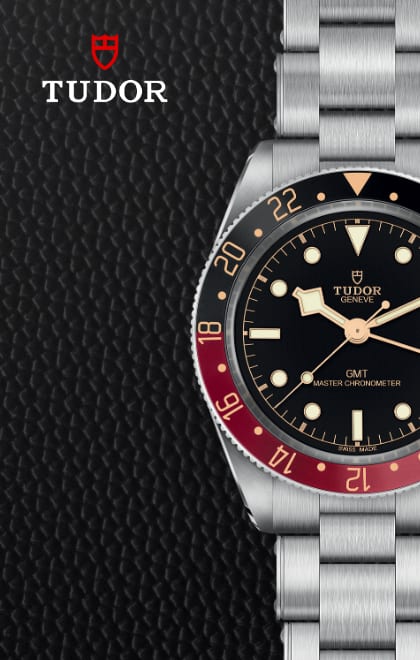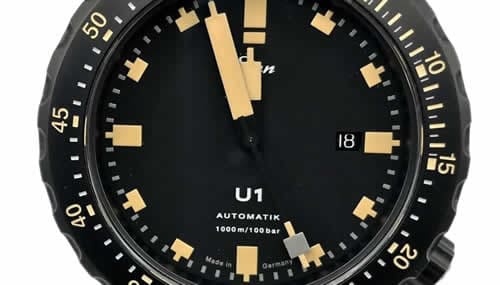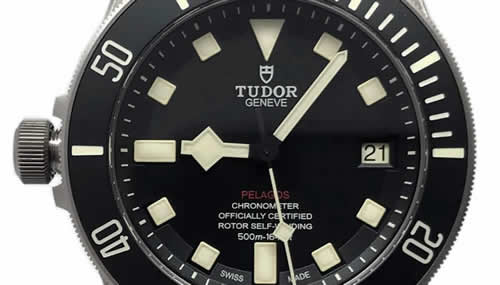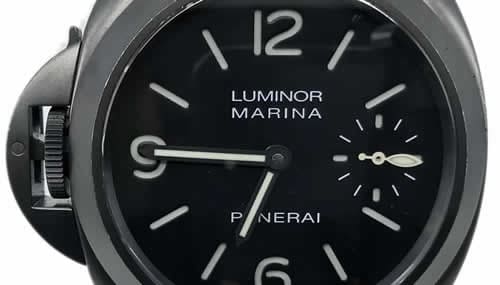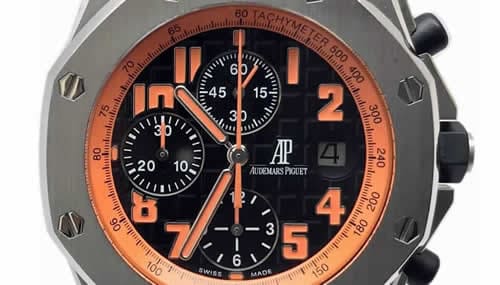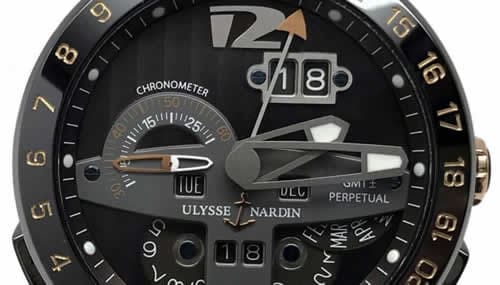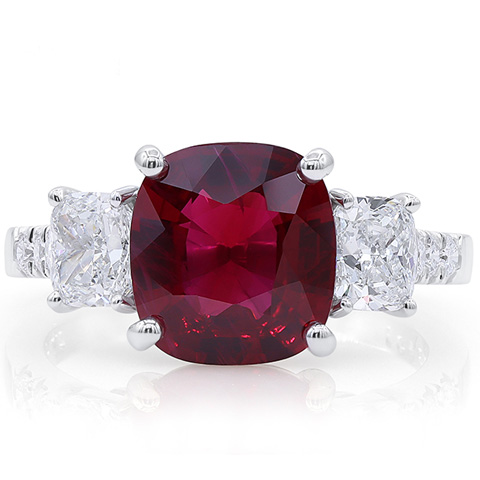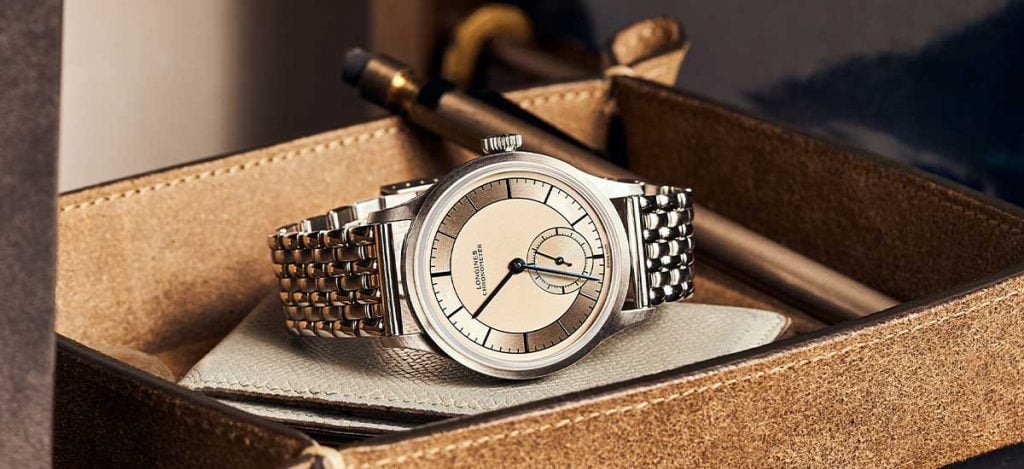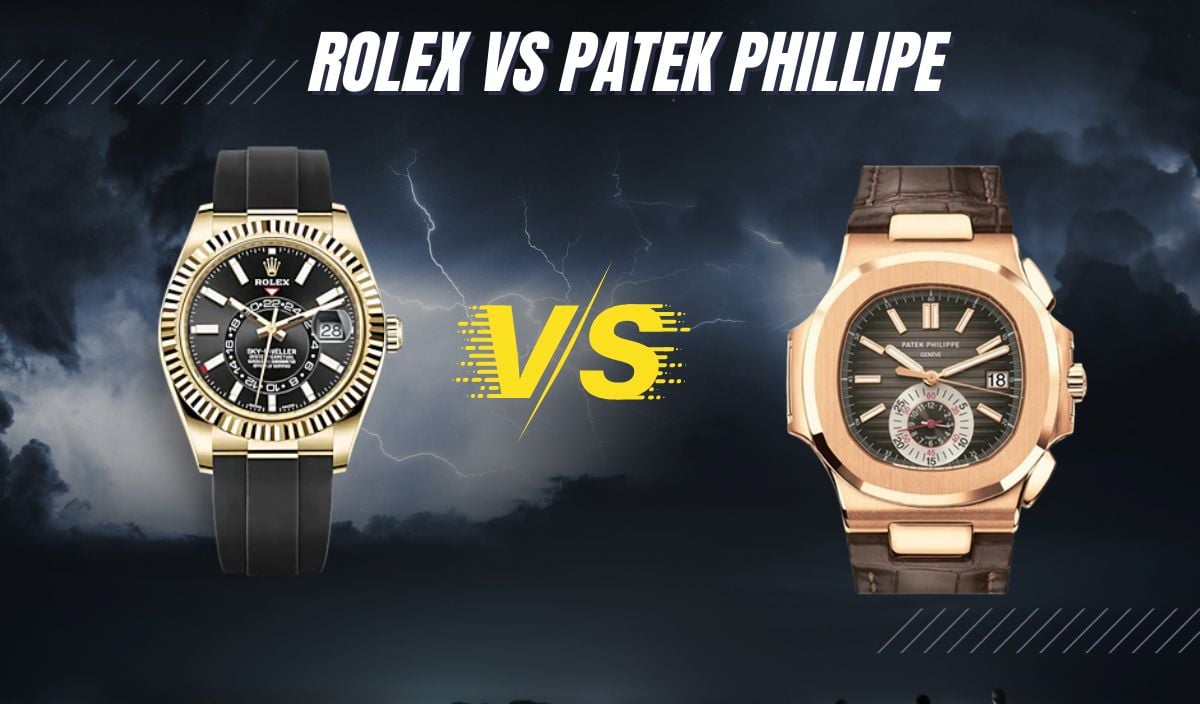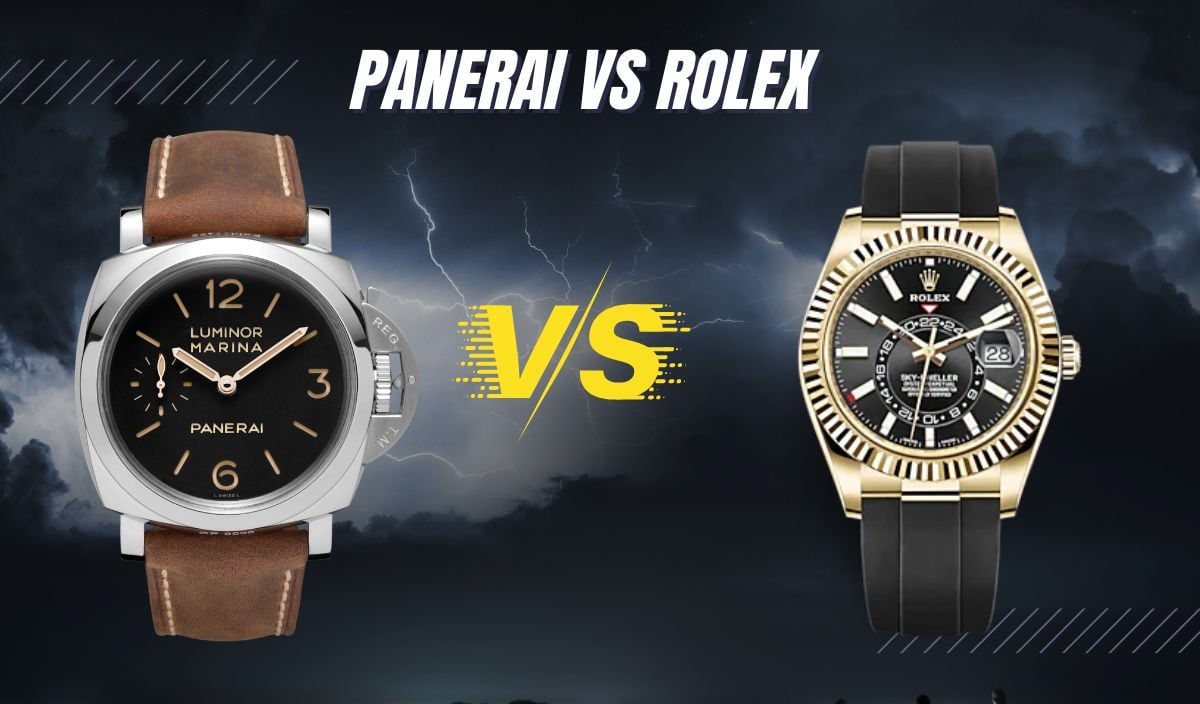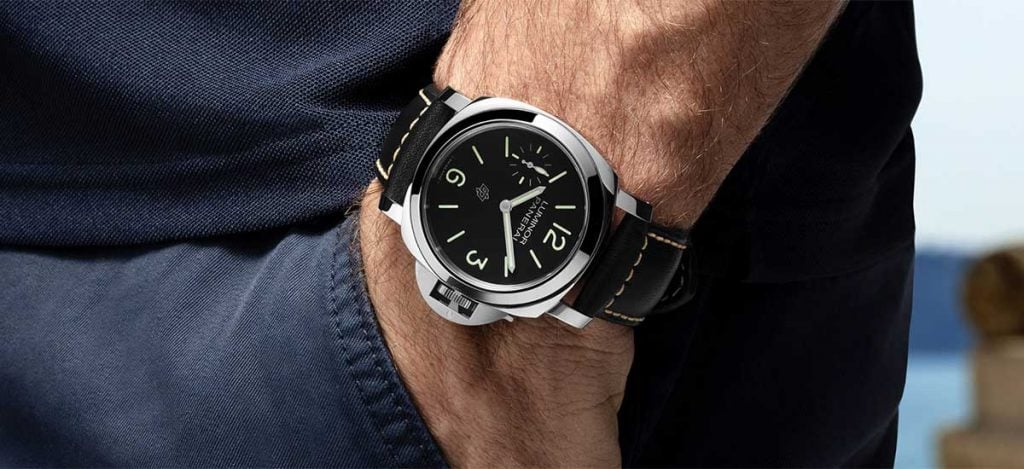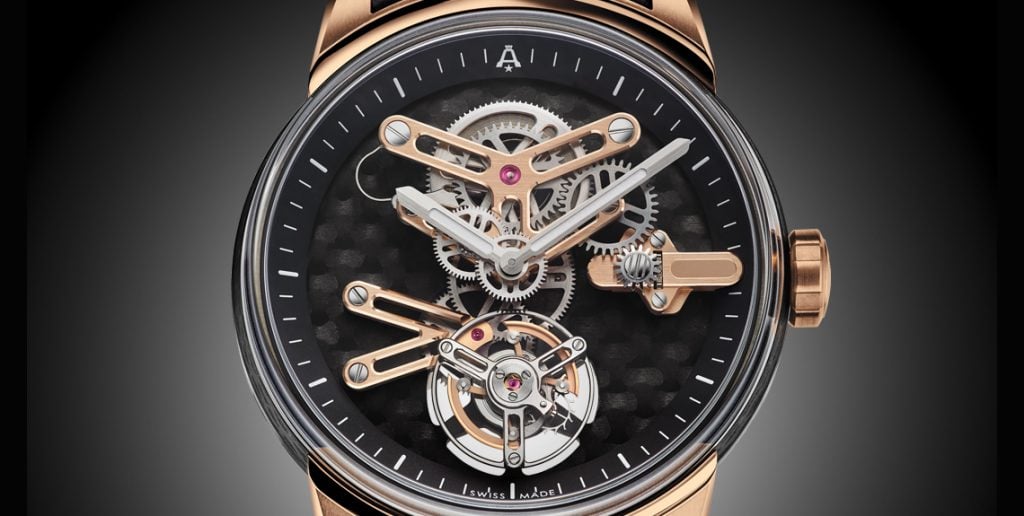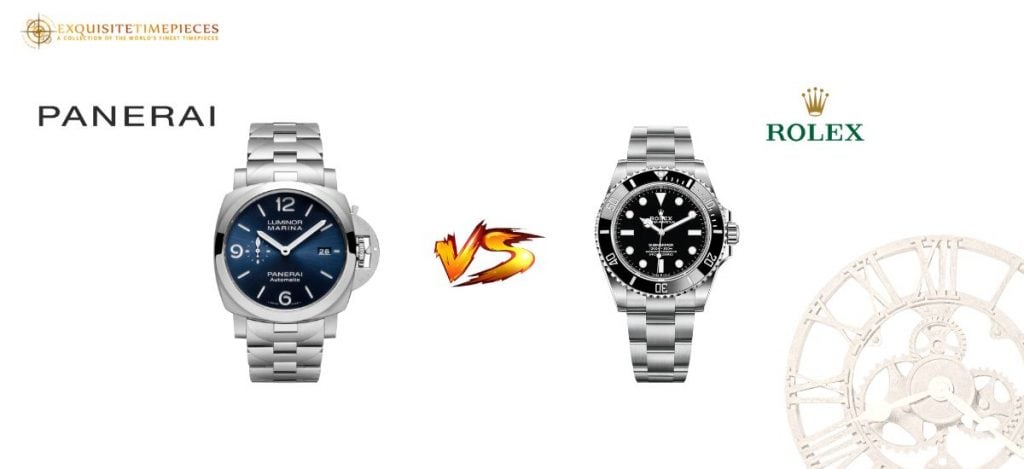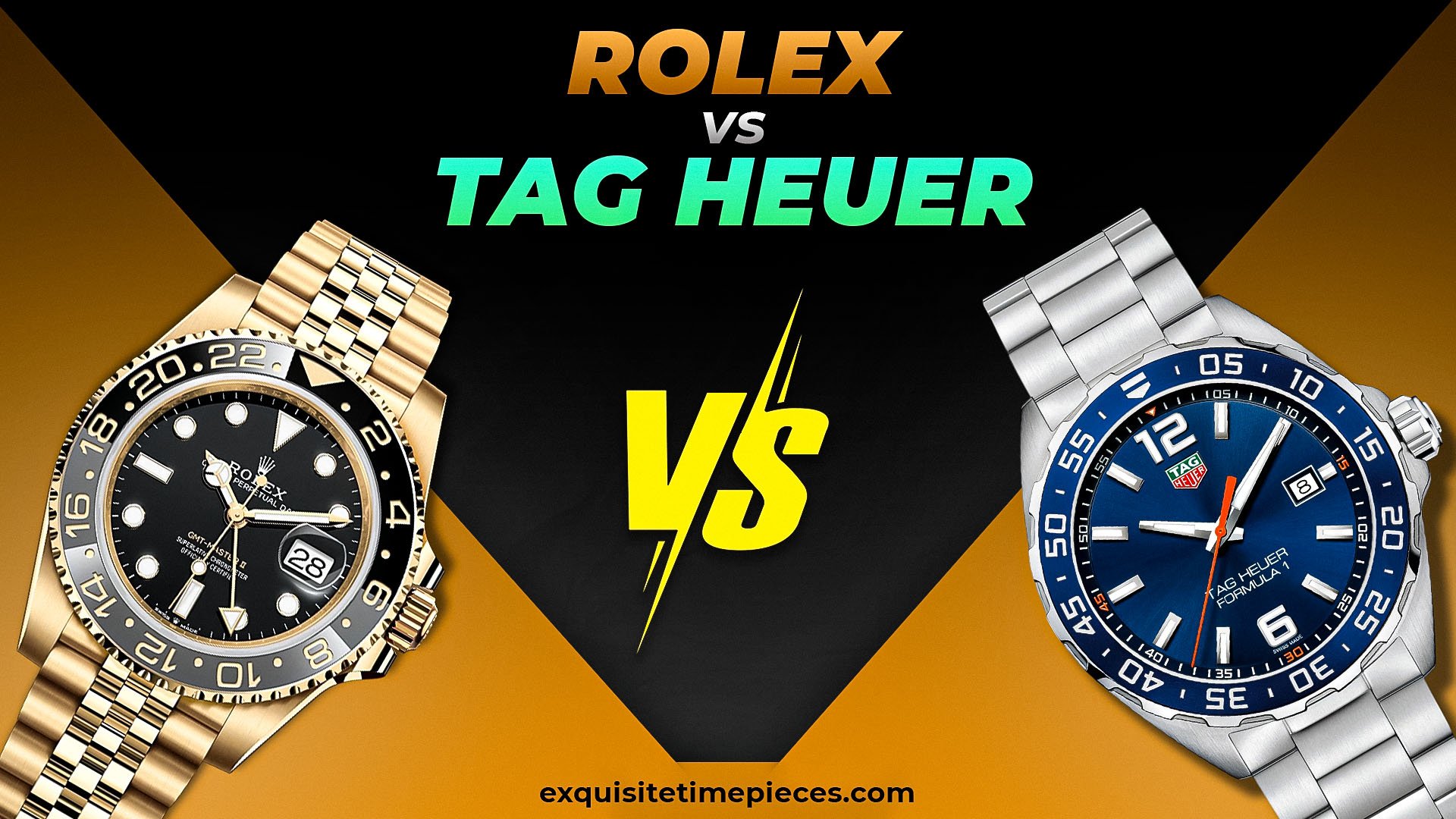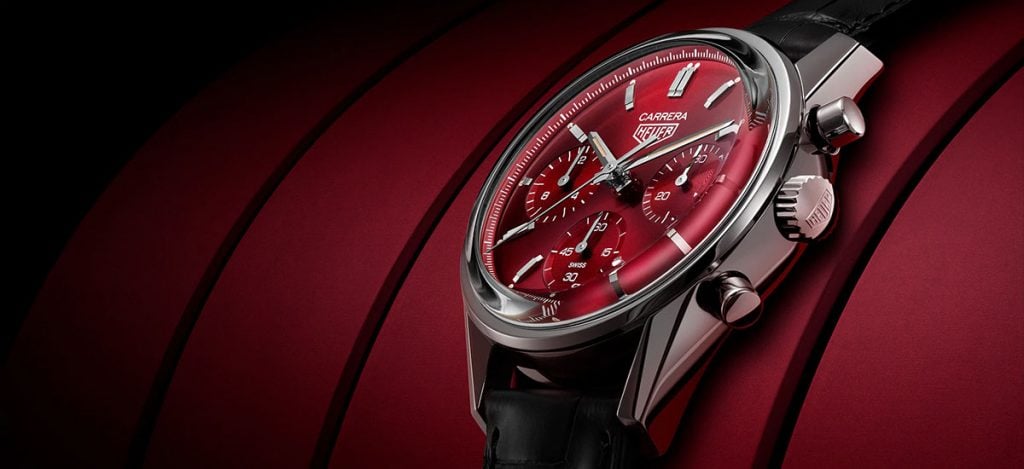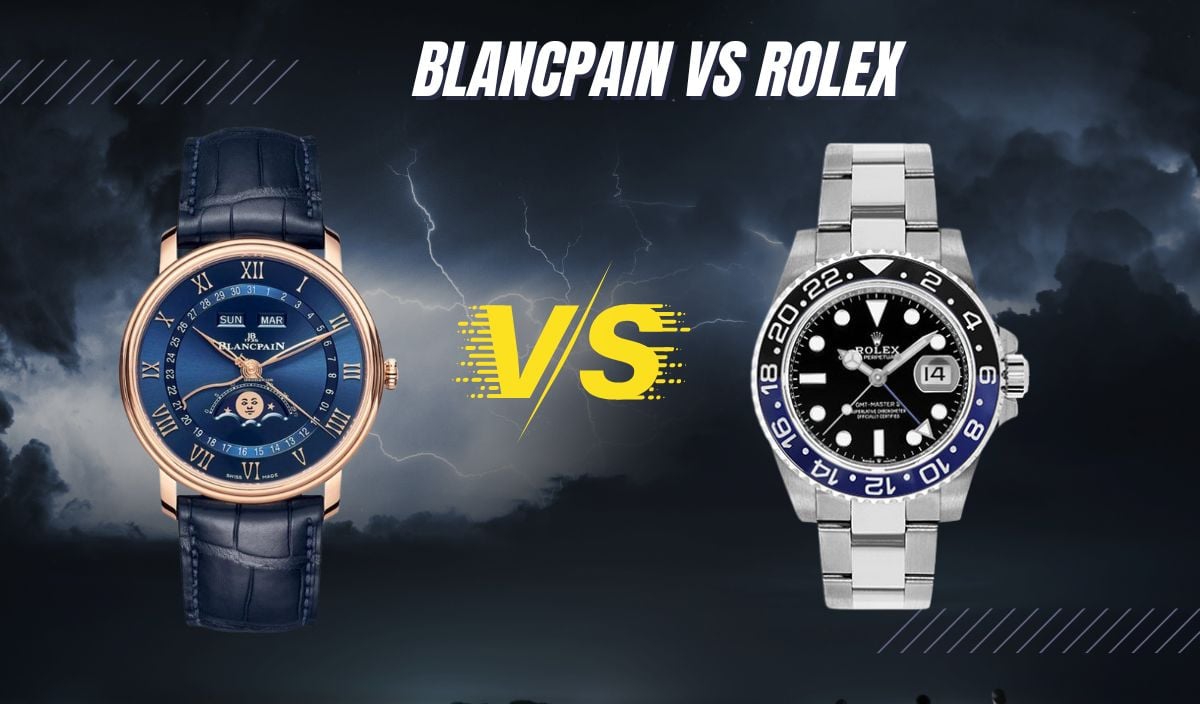
In this article, I will take as deep a dive into these two iconic brands as possible to help answer some of the questions you might have concerning the purchase of either a Rolex or Blancpain timepiece. Along the way, you will get an overview of what makes these two brands tick, as I will share a brief history of each brand and then expound on a few of each company’s popular models, their movements, and what makes each brand iconic among watchmakers.
Blancpain- World’s Oldest Swiss Watch Brand
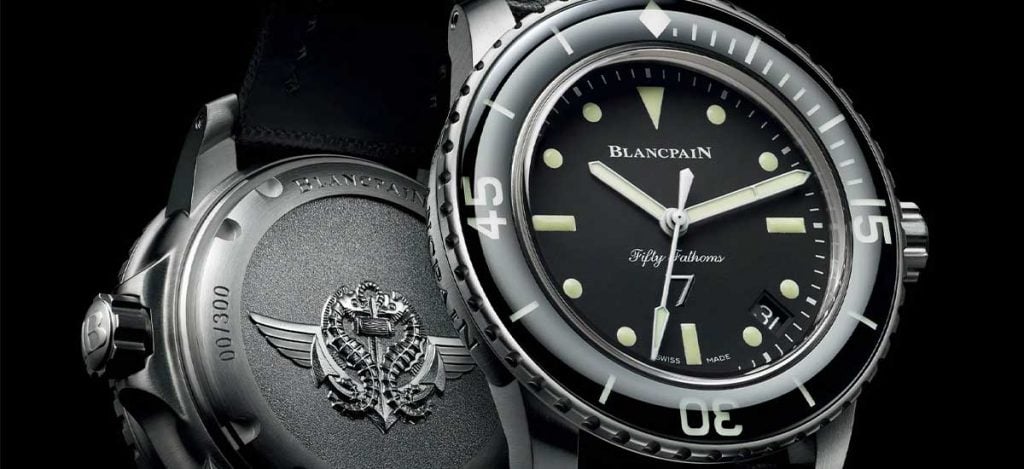
Blancpain was established in Villeret, Switzerland in 1735 by Jehan Jacques Blancpain. It is considered the oldest Swiss watch brand that is still in operation today. In 1825, Blancpain’s grandson Frederic Louis Blancpain improved the original workshop and developed a modified watch escapement design. This along with the pursuit of ultra-thin construction became the foundation for the brand.
In 1830, Frederic Emile Blancpain, son of Frederic Louis, sets up the largest watch manufacturer in Villeret and renames the company Fabrique d’Horolgerie Emile Blancpain. In 1859, Louis Elysee Piguet opens a world-class watchmaking shop in Vallee de Joux and is commissioned by several high-end Swiss brands to create watches with various complications.
1932 saw the passing of Frederic Emile Blancpain. With his passing, the company was left to his longtime assistant Betty Fiechter. Fiechter became the first women CEO of a swiss watch brand. Due to Swiss laws, this presented a dilemma since there was no longer a member of the original founding family involved in the business. The name had to be changed to accommodate these laws and Rayville S.A. succ. Blancpain was established.
For the next twenty years, Betty comanaged the brand with her nephew, Jean Jaques Fiechter. By the end of the 1950s, the company was manufacturing about 100,000 watches per year. Due to the growing demand for their watches, Rayville was purchased by SSIH (Societe Suisse pour l’Industrie Horlogerie). By 1982, SSIH was purchased by Jacques Piguet and the company name changed once again to Blancpain S.A. Today the brand is owned by the Swiss watch conglomerate SMH (the Swatch Group).
Several milestones in the history of Blancpain are as follows:
- 1983- created the world’s smallest moon phases display.
- 1987- developed the thinnest self-winding chronograph and the smallest minute repeater movement at the time in the world.
- 1988- created the thinnest split-seconds chronograph at the time.
- 1991- introduced the 1735 Grande Complication (one of the most complicated watches in the world with a tourbillon, minute repeater, perpetual calendar, and split chronograph).
- 2000- first self-winding tourbillon and perpetual calendar with an 8-day power reserve.
- 2008- introduced the world’s first movement with a one-minute flying carousel and 100-hour power reserve.
An interesting fact is that Blancpain has never offered a watch with a quartz movement. In fact, the brand’s motto is “Blancpain has never made a quartz watch and never will.” Following the success of the Fifty Fathoms collection, Blancpain has made a commitment to supporting the preservation of the oceans and the seas worldwide through various initiatives.
The company has established a three-prong approach to achieving these goals by raising awareness of the beauty of the ocean, contributing to scientific research, and implementing efficient ocean conservation measures.
Rolex’s History
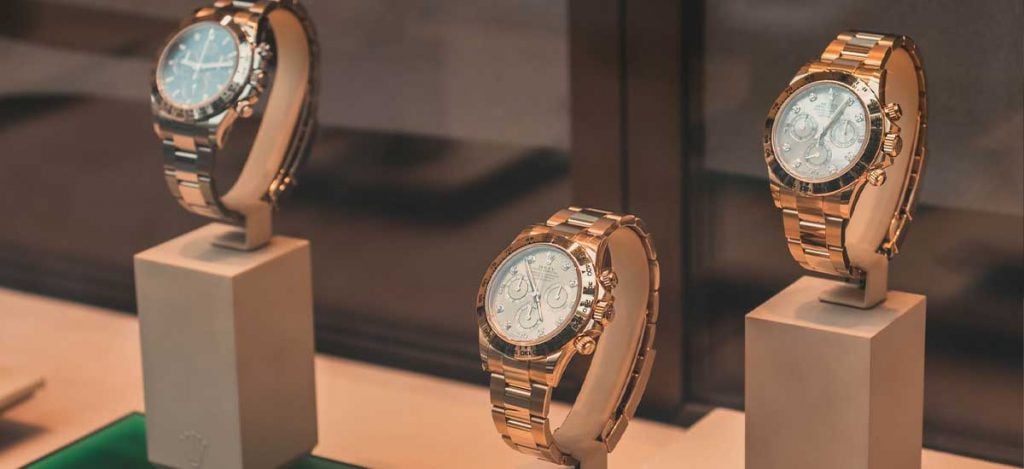
Rolex, surprisingly, has been around for a far shorter time than most other luxury Swiss brands (like Richard Mille and Hublot). This is an even greater testimony to the success of the Rolex brand and the reputation the company enjoys today. Much of this success is attributable to Hans Wilsdorf, the English entrepreneur responsible for the creation of the brand.
Though conceived in England, Wildorf created the Rolex brand in 1908 and would ultimately move the entire operation to Geneva, Switzerland where he would create the first water-proof self-winding wristwatch with a perpetual rotor. In fact, a patent was issued to Rolex in 1926 for the world’s first waterproof watch, which today is the oyster case.
Rolex has filed for over 500 patents over the history of its existence for innovations that range from its movements to its exclusive Cerachrom bezels and bezel inserts. Cerachrom is a ceramic material that is virtually impervious to scratches and its color is unaffected by the sun’s ultraviolet rays. Rolex today is a completely vertically integrated company with every step of the watch’s conception to completion performed by the Rolex team.
To ensure continued success and commitment to producing the highest quality timepieces, Rolex has an exclusive training center that educates, trains, and acclimates every employee to their culture of excellence as well as one of the most rigorous testing labs to ensure the integrity of every watch.
There is even a department of tribology where the scientific study of friction, wear, lubrication, and how moving parts interact in every aspect of a watch’s movement and physical parts exists in order to continue Rolex’s constant perfection in watchmaking.
Another attribute of the Rolex collection is its commitment to precision and accuracy. Every Rolex is not only a certified chronometer but a superlative chronometer as reflected by the certificate and green seal that accompanies each wristwatch. The parameters of accuracy exceed those required by the COSC, which are -4/+6 seconds per day. The superlative identification reflects a deviation of -2/+2 seconds daily.
Blancpain Fifty Fathoms vs. Rolex Submariner
The iconic Blancpain Fifty Fathoms was launched in 1953 and was the first real deep-sea scuba diving watch. Shortly thereafter, the Rolex Submariner was brought to market in that very same year but Blancpain was first to the party. The watch was birthed out of the efforts of Captain Robert Maloubier and LT. Claude Riffaud of the French navy.
The two were commissioned to pioneer underwater special operations which required a timepiece that could withstand great depth and with great water resistance. There were four features that the two desired to have incorporated into the watch. High water resistance, a black dial, an external bezel to track time, and luminous markers so that it was easily readable in the dark and underwater.
Then Blancpain CEO Jean-Jacques Fiechter, also a fellow diver, took the mandate of these French naval officers and the Fifty Fathoms was created and launched. The Fifty Fathoms has a stainless steel case that measures 45 mm. in diameter. It is 15.5 mm. thick and is 23 mm. between each lug. The watch is available in either a black or blue dial with an interesting smaller circle on the dial as if the markers were perched on it, and a date window between the four and five o’clock markers.
It has Arabic numerals at the three, six, nine, and twelve positions with triangular-shaped indexes in between the Arabic markers. All are treated with luminous for easy readability. The watch is protected by a sapphire crystal. The watch has an in-house Blancpain caliber 1315 mechanical automatic movement featuring 227 components, and 35 jewels, and vibrates at 4 Hz with a 120-hour power reserve.
The movement is shielded by an antimagnetic cage. The approximate retail price of the three base models are as follows:
- Stainless steel case with a sail canvas strap with buckle $14,500.00
- Titanium case with a sail canvas strap and buckle $15,700.00
- Stainless steel case and bracelet $17,200.00
The Submariner is one of the Rolex collection’s most popular watches. For comparison, I will elaborate on the base model’s features, which are available in 904L stainless steel in either a date or non-date version. In keeping with a more accurate comparison with the Blancpain Fifty Fathoms watch, I will elaborate on the Rolex date model.
The dimensions of the case are 41mm. wide and 48 mm. from lug to lug. The lug width is 20 mm. and the case is 12.5 mm. thick. The heartbeat of this watch is an automatic mechanical caliber 3235 in-house manufactured Rolex movement.
It consists of 201 components, and 31 jewels, and vibrates at 28,800 V/h. The watch employs a bidirectional rotor, a paramagnetic blue parachrom hairspring, high-performance paraflex shock absorbers, Chronergy escapement (Rolex patented, combining high energy efficiency and superior dependability), and a paramagnetic oscillator balance staff.
The virtually scratchproof Cerachron ceramic bezel is sixty clicks and unidirectional The watch has a power reserve of 70 hours. The timepiece is outfitted with a scratch-proof sapphire crystal and a cerachrom bezel with markings filled with platinum PVD coating. There is a cyclops magnifier over the date window, a common characteristic of Rolex watches.
To round out its appearance the dial has “Blue” chroma light lume markers for easy visibility in the dark or underwater and, according to the company, last for up to eight hours. The rugged oyster steel bracelet with oyster lock clasp compliments the appearance of the Submariner.
Water resistance is rated at 300 meters. The approximate retail for the non-date model is $8950.00 with the date model running about $10,100.00.
Conclusion
In comparing the movements in each of the watches, I would give the edge to the Fifty Fathoms for its power reserve feature, but the new Rolex caliber 3235 movements is no slouch. As per Rolex, the caliber 3235 movement replaces the caliber 3135 movements in previous Submariner date models. This movement is constructed with 90% newer components and is covered by fourteen patents.
Great improvement has been made in efficiency and dependability, and as always, the Submariner enjoys a solid reputation among watchmakers as being easy to service and maintain. One advantage of the Fifty Fathoms is that it is available in a strap model, unlike the Submariner, and you do have the choice of a titanium case if that is your preference.
On the subject of price, the Rolex appears to be a better purchase choice. The Rolex is equally as comfortable worn in the office and for diving and there is always the cache of wearing a brand that is equally recognizable and prestigious. I would go with the Submariner.
Rolex Submariner vs. Blancpain Fifty Fathoms No Radiation
The technical information for the Rolex Submariner is found in the previous paragraphs. Now I will dive into the features of the Fifty Fathoms No Radiation model. The Fifty Fathoms No Radiation watch is a limited edition tribute to the original model that was introduced in the 1960s. At that time awareness of the harmfulness of radioactive materials to the human body was rising.
Many of the lume used in watches at the time employed radioactive materials. Blancpain set out to create a “no radioactive” luminous treatment for their indexes, hands, etc. This model is easily recognizable by the yellow and red no radiation stamp on the dial right above the six o’clock position. This is on a stark black dial with a date window at the three o’clock position.
The luminous is colored super-luminova which recreates the patina of the original “old radium” look that was retired. The case is 40.3 mm. In diameter and 13 mm. Thick. The distance between the lugs is 20 mm. And the case is polished as opposed to brush finished as in other Fifty Fathom variations. The mechanical automatic caliber 1151 movement measures 27,4 mm and 3.25 mm. Thick.
It is a 28-jewel movement with 210 components, vibrating at 3 Hz, and possessing a silicon balance spring. The power reserve capacity is 100 hours. It has a sapphire bezel which is unidirectional and sixty clicks. The diver is water-resistant to 300 meters and comes with a black rubber strap. Another aspect of this particular timepiece is that it is considered one of Blancpain’s “ultra-thin” models. One of these 500 limited edition pieces will cost approximately $14,100.00.
Conclusion
I will stick with my recommendation, and choose the Rolex Submariner over the Fifty Fathoms No Radiation timepiece. For reasons set forth in the previous conclusion in this article, I believe for the price, you get a fuller package with The Submariner. Appearance, utility, rugged construction, and an easy-to-use watch. The allure of the Fifty Fathoms No Radiation being a limited edition piece will attract its share of potential customers, but for the most part, I believe the Submariner has the edge.
Blancpain Fifty Fathoms vs. Rolex Sea Dweller
I refer you to the characteristics and technological aspects of the Fifty Fathoms watch mentioned earlier in this article. I will now delve into the Rolex Sea Dweller and its features. The Rolex Sea Dweller was introduced in 1967, and quickly became a classic amongst deep-sea diving enthusiasts. The Sea Dweller is water resistant to 1220 meters or 4000 feet.
The deep sea features were amped up to include a 60-click unidirectional ceramic bezel with a Cerachrom (Rolex patented) bezel insert that was scratchproof. The dial features a chromalight display with a distinctive blue glow luminescence that lasts for up to eight hours and makes the watch very easy to read in the depths of the sea. The hands and indexes were also enlarged for easier readability.
The case measures 43 mm. in diameter and is constructed of 904L stainless steel which is highly durable and non-corrosive. The crown is a screw-down type that features Rolex’s Triplock triple waterproof system. The Sea-Dweller also comes equipped with a helium escape valve that operates automatically. When the difference in pressure between the inside and the outside of the watch reaches three to five bars, the valve opens allowing the built-up helium to escape the case.
The Caliber 3235 mechanical automatic movement is the latest incarnation from Rolex and is the same movement found in the new Submariner. For all the improvements and descriptions of this movement, I refer you to the Rolex Submariner information written earlier in this article.
The Sea Dweller in all 904L stainless steel sells for approximately $12,950.00. You can opt for an oyster steel and 18-carat model (Featuring Rolesor- the Rolex patented name for the combination of these two materials) for approximately $17,000.00
Conclusion
I give the advantage to the Rolex Sea Dweller. The watch has superior water resistance to the Blancpain Fifty Fathoms and the added security of the helium escape valve keeps the watch intact. The Rolex Sea Dweller is also available for approximately $4000.00 less than the Fifty Fathoms.
For my taste, I prefer the look of the Sea Dweller. Coupled with all the advancements and enhancements of the current caliber movement, I believe this is a solid choice.
Blancpain Caliber 1315 Movement vs. Rolex Caliber 3135 Movement
The Blancpain Caliber 1315 movement measures 30.6 mm. in diameter and is 5.65 mm. Thick. The mechanical automatic is comprised of 227 components, 35 jewels, and vibrates at a speed of 4 Hz. For an excellent deconstruction and explanation of this movement.
The Rolex caliber 3135 movement is regarded as one of the most well-known and recognized automatic self-winding movements within the Rolex brand. The COSC-certified automatic self-winding movement measures 28.5 mm. In diameter and has a height of 6 mm. The in-house manufactured movement is made up of approximately 200 components and 31 jewels.
The movement operates at 28,800V/h. Standouts of the movement include a Parachrom blue hairspring, a Swiss lever escapement, a bidirectional winding Teflon-coated rotor, and a Glucydor balance wheel. The power reserve is 48 hours.
Note: Parachrom blue is a combination of niobium and zirconium / Glucydor is a combination of beryllium and copper.
Conclusion
Both are excellent movements The Rolex caliber 3135 has been upgraded to a caliber 3235 which has been discussed at length in this article. The biggest and most obvious difference is in the power reserve features for both movements. With the Blancpain, you get a 120-hour power reserve as opposed to the Rolex which is 48 hours.
If this is an important trait of the watch you wish to wear then the Blancpain would be your choice. The Blancpain may be more elegant in its finishes, but this model comes with a steel back so you can not enjoy the artistic nuances. Since Rolex has never offered a skeletal back, finishes have taken a back seat to precision and durability.
Best Alternative to a Rolex
There are several alternative watch brands that offer timepieces that have the appearance and features of many Rolex models such as IWC. They range in price from very affordable to Rolex-level prices. I have assembled an extensive list of timepieces that are comparable to the basic oyster gent’s watch. Their approximate retail prices are reflected on the list. Many of the models even exceed the features available in the basic oyster perpetual watch. They are as follows:
- Tissot Gentleman Powermatic 80 Silicium $ 775.00
- Longines Conquest 39 mm. $1250.00
- Sinn 5561 $1530.00
- Monta Noble $1795.00
- Ball Engineer lll Marvelight $2350.00
- Tag Heuer Carrera Date $3000.00
- Tudor Black Bat 36 $3050.00
- Omega Seamaster Aqua Terra $5700.00
- Grand Seiko SLGA009 $9100.00
Three other alternatives to popular Rolex models are the following:
- For the Rolex Submariner, the Omega Seamaster Diver 300 m. @$5400.00
- For the Rolex Daytona, the Zenith Chronomaster Sport @$11,000.00
- For the Rolex GMT Master 2, the Tudor Black Bay GMT @$4175.00
FAQ’s
Rolex offers a five-year international warranty whereas the Blancpain watches come with a standard two-year warranty that is extended an additional year if you purchase your Blancpain watch at one of their boutiques.
Rolex watches retain their value probably better than any other Swiss luxury watch brand except Patek Philippe. Blancpain watches do appreciate over time due to their limited quantity produced yearly and because of their reputation for complications and longevity. Over longer periods of time, and maintaining the watch’s condition, you should experience appreciation in value over time.


